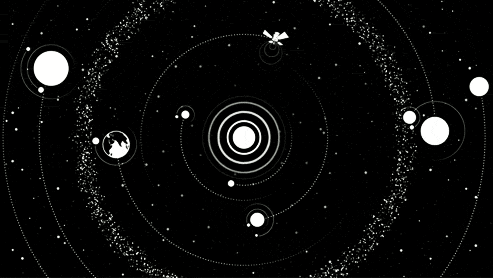Come Watch This
Come watch this
More Posts from Curiositytherover and Others


Changing Moods with Sleep and Light
Pregnant with her first child, Monica Bryan noticed changes in her mood and energy levels. That’s when she heard about a UC San Diego School of Medicine clinical study aimed at using sleep and light therapies instead of medication to treat premenstrual, pregnancy, postpartum and menopausal depression.
Barbara Parry, MD, professor of psychiatry at UC San Diego School of Medicine, says the mood changes a woman undergoes before menstruation and during pregnancy, postpartum and menopause may result from the effect of a hormonal change on circadian rhythms. These circadian rhythm changes are akin to what occurs in jet lag when sleep and hormonal changes become “out of synch” with each other.
“The circadian rhythms of people who suffer from depression are off balance,” said Parry. “In women who develop depression during pregnancy, for example, melatonin, the hormone that anticipates the arrival of nighttime, is secreted earlier, and sleep onset occurs later, affecting the perceived quality of sleep.”
These disturbances in the body’s circadian rhythms can be triggered by changes in reproductive hormones that occur during the menstrual cycle, the peripartum period and menopause, resulting in an increased vulnerability to mood disorders. The noninvasive trial uses sleep and light therapy as a way to correct these biological rhythm disturbances, and thereby, improve mood. The trial is open to women with and without depressive symptoms related to the reproductive cycle, and compensation is available.
For two weeks, Bryan completed daily and weekly mood ratings and weekly clinic visits as part of the evaluation period. This study phase was followed by monitoring of her melatonin levels at home. Her activity levels were recorded via a wrist-mounted fitness band that measures activity and light exposure to assess the relationship between melatonin and activity and rest cycles.
After all baseline information was gathered, Bryan began the one-week intervention phase, which included one night of altered and shortened sleep cycle followed by light therapy. During this time the fitness band continued to record sleep, activity and light exposure.
Participation in the trial didn’t require much effort, said Bryan. She kept a daily log of her mood ratings and how much time she spent indoors and outdoors. Beyond that, the only added requirement was spending one hour after waking sitting in front of a light box.
“I spent the hour watching television, reading or catching up on what I missed the day before on my phone,” said Bryan. “There was no problem taking a little bit of time for myself in the mornings.”
Read more here For more information about the sleep and light therapy clinical trials, please call 619-543-7393

Typically the first question asked of new parents is, “Is it a boy or a girl?” But what is the brain biology behind sexual differences? Join Bridget Nugent, a researcher from the University of Pennsylvania, to learn about how sex differences are created in the brain.
Download this podcast or watch the video below:
Is It Ok To Hold In Farts…?

Sky-piercing towers, Hyperloop transports, driverless cars, and 3D-printed buildings. Welcome to Dubai, the City of the Future.

Jeff Bezos beats Elon Musk’s SpaceX in the reusable rocket race

Using copper to prevent the spread of respiratory viruses
New research from the University of Southampton has found that copper can effectively help to prevent the spread of respiratory viruses, which are linked to severe acute respiratory syndrome (SARS) and Middle East respiratory syndrome (MERS).
S. L. Warnes, Z. R. Little and C. W. Keevil. Human coronavirus 229E remains infectious on common touch surface materials. mBio, November 2015 DOI: 10.1128/mBio.01697-15
This is human coronavirus 229E being inactivated on copper. Credit: University of Southampton

Flying Through an Aurora, another astounding image captured by ESA astronaut Alexander Gerst http://space-pics.tumblr.com/

Google’s Superhuman Computer Can Tell Where Neany Any Photo Was Taken
Google knows where your photos were taken… http://futurism.com/world-googles-superhuman-computer-knows-photo-taken/
-
 curiositytherover reblogged this · 9 years ago
curiositytherover reblogged this · 9 years ago -
 virusmnd reblogged this · 9 years ago
virusmnd reblogged this · 9 years ago
